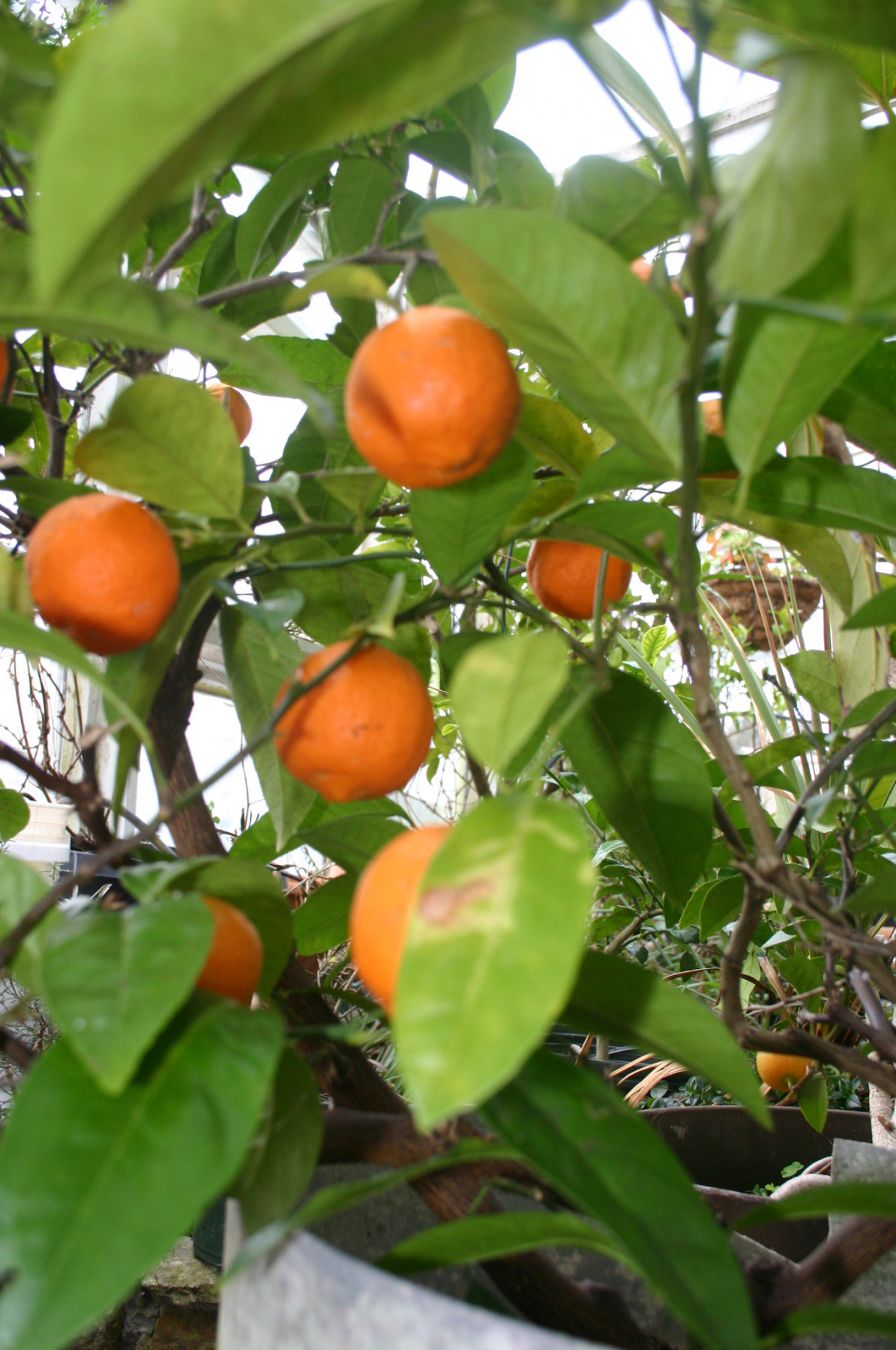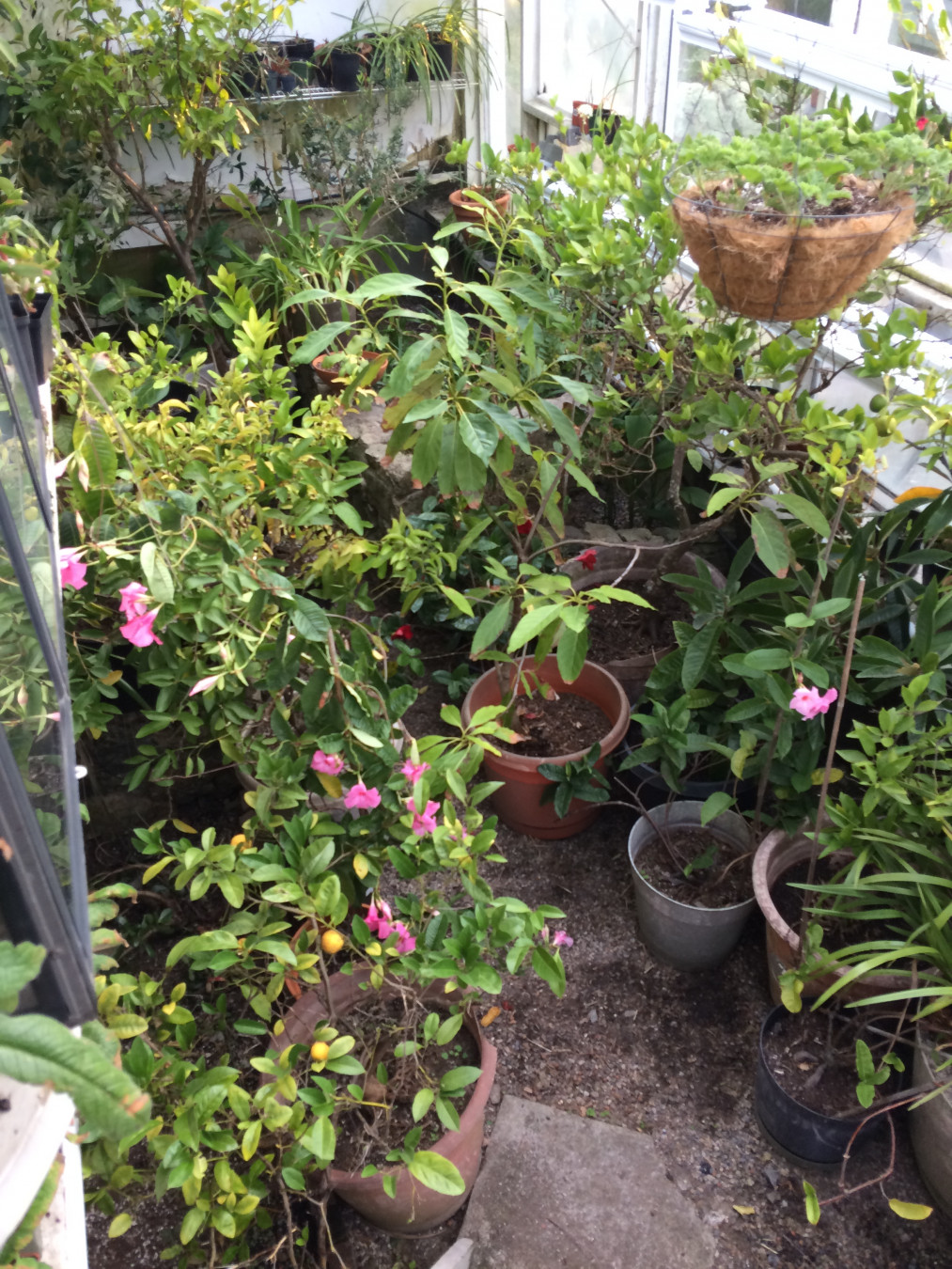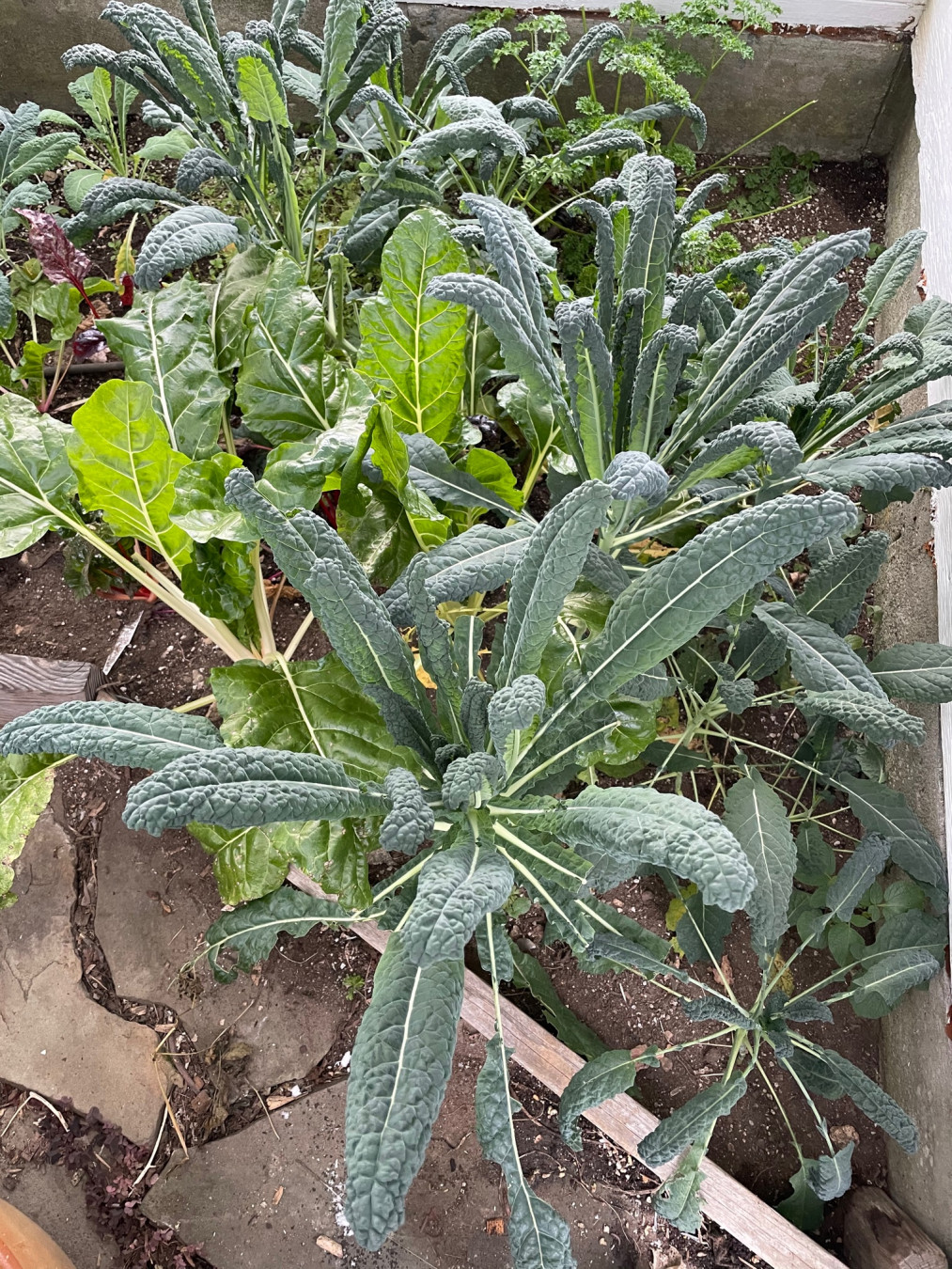
If you’ve just acquired a new greenhouse, what plants should you choose for it? This can be a tough decision for beginning greenhouse gardeners because of the great diversity of options available. The best approach may be to actually embrace that diversity. By this I mean picking one or two varieties from major categories of plants, including vines, trees, herbs, vegetables, and flowers.
Vines
Because of the potential height to which they grow, vines can add much interest to a greenhouse. And many of the vines that you can choose from produce edible fruit. Consider a grape vine, for example, with the wonderful fragrance of ripening fruit. You can also use its leaves to make dolmades (the Greek name for stuffed grape leaves). You might want to try a passionfruit vine to get both very showy flowers and fruit. Another interesting vine to grow is kiwi, but you’ll need a male and a female plant to produce fruit. Beware, however, that these vines can grow up to 40 feet in a single season!
You also have options for flowering vines. Some possibilities are mandevilla (in pink or red), cardinal creeper (from the morning glory family), and jade vine (with its beautiful hanging clusters blooms). All these flowering vines will give you lots of showy color, but take care that they don’t overwhelm your greenhouse.

Trees and Shrubs
Many greenhouse owners like to grow citrus trees, which are generally purchased as small plants and left to grow quite large. Starting with plants 12 inches (0.3 m) in height, I now have a 22-year-old orange tree that is eight feet (2.4 m) tall and a 20-year-old Key lime tree that has reached six feet (1.8 m) and produces enough fruit for far too many fattening key lime pies! If your greenhouse is small, it’s best to buy dwarf trees to reduce the chances of them getting too large. Other options for greenhouse trees and shrubs include fig, avocado, kumquat, papaya, banana, coffee, and tea plants.
Herbs
Growing herbs outdoors is very popular, but when you have a greenhouse your options increase greatly. You can now grow some fairly exotic tropical herbs that are difficult or impossible to grow outdoors in temperate zones. For example, you might want to grow bay, lemongrass, turmeric, tarragon, ginger, or galangal, all of which can be cultivated in pots. When harvesting the herbs you grow, make sure not to deplete the plants entirely. Always save the “mother” plants for next season.
Vegetables

Many people also grow vegetables outdoors in summer and freeze the excess harvest for winter use. With a greenhouse, however, you can now grow many vegetables year-round even in northern climates. Kale and chard, for example, are two remarkably cold-tolerant vegetables that can survive most winters even in an unheated greenhouse. Carrots, leeks, collards, and other root vegetables are among your other cold-hardy options. If your greenhouse is heated, the possibilities expand significantly, of course. In most cases, when growing vegetables in your greenhouse for wintertime crops, you’ll need to start the seeds for these plants sometime in late August up to mid-September in the northeast.
Flowers
When most people picture a greenhouse, they picture flowers in it. The warmth of a greenhouse seems to cry out for colorful blooms. As a new greenhouse owner, you’ll want to explore all your options for flowering plants, especially ones that can brighten the dreariness of winter.
In thinking about wintertime flowers, pick your plants with the flowering schedule in mind to keep blooms coming month after month. Christmas cactuses, for instance, are a great choice for blooms from November to January. To get spring flowers as early as February and March, just pot up a few primulas and put them in your greenhouse. And while you’re planning a flowering schedule, don’t forget about bulbs, such as amaryllis and paperwhites. Simply plant the bulbs in pots about 6 to 8 weeks before you want the blooms. Also, for those in-between times, African violets and Cape primroses can be in bloom in a greenhouse virtually all winter long.

Orchids
Orchids are also extremely popular greenhouse flowers. Among the easiest to grow are phalaenopsis orchids, which are sold virtually everywhere in a wide variety of colors. When the blooms eventually fade, just snip off the flower stem and let the plant rest for a few months under your greenhouse workbench, while keeping the soil moist. As soon as a new flower stalk emerges, fertilize the plant and put it in a warm place until it flowers again. Dendrobium orchids are also easy to grow and tend to flower profusely from February through June. Dendrobium-phalaenopsis hybrids are popular, too, especially among novice orchid growers.
If you’re looking for orchids that are more cold-tolerant, cymbidiums are a good choice. Most can survive in your greenhouse even if nighttime temperatures drop to 40˚F (4.4˚C). These plants will reward you with blooms from mid-fall to early spring, even in the dead of winter. Just repot your cymbidiums after they’ve flowered to get more blooms next winter.


